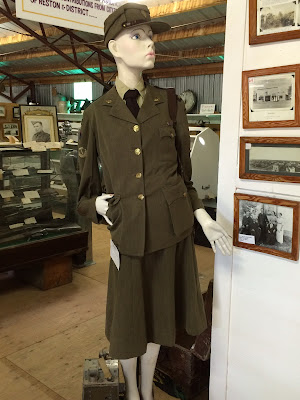According to the minutes book, it was the spring of 1966 when Joe Ashley and his brother Charles approached the Reston Memorial Park Board with the idea to create the Reston and District Museum on their grounds. At that exact time, President Maurice Ludlam and the 9 board members were busy preparing for the imminent departure of long time park volunteer Alfred Archer. Planning for 1967 celebrations of Canada's centennial year were also forefront in everyone’s mind. The former Stonehill School was offered to move to the Park to house antique and pioneer items. The Ashley brothers were not in favour of this building and they then approached the Reston Lions club with an offer of $1800 if they would supervise construction of a new steel building with a cement floor. Luckily, the Lions agreed to take on the project even though they were heavily involved in building the Alstone Lodge at the time. A location on the north east corner of the Park beside the tennis court was decided on for a museum following a study by a committee of Edison Berry, Lew Trail, John Abbey, Doug Watt and Art Smith. Community support was strong with monetary donations and volunteer labour both generously supplied.
Beaver Lumber Company was given the contract to supply material to build a 30’ X 60’ building under the supervision of Bob Moore. Natural light was part of the design with translucent fiberglass panels. A receiving and scrutineer committee of Alvin Lazenby, Reg Berry and David Braddell were charged with evaluating donations but the history book says they accepted "practically everything offered" . The Ashley Brothers donated their parents' living room furniture as well as many, many other items, according to an article in the Brandon Sun written by Helen (Manning) Ready in 1976. This clipping and the Trails Along the Pipestone (1981) history book were the main reference sources for this post.
After much work, the museum opened to the public on Centennial Day celebrated on June 20, 1967. The museum operated through Provincial grants, bequests, donations and sale of memberships. The same continues today under the direction of a volunteer board.Joseph and Charles Ashley were two of the five children born to John Joseph and Rebecca (McGuire) Ashley. The family had relocated from Ontario to the East half of 12-8-27 in the Lambton district, northeast of Reston in 1904. The brothers were innovative thinkers and first in the district to embrace the use of tractors and automobiles. Conversely, they also had a love of antiques, Aboriginal relics, petrified wood and rocks.
The Ashley farm was just a few miles west of Oak Lake Indian Reserve, now known as Canupawakpa and the people were greatly respected by the family. Joe died in 1969 and his brother Charles in 1975. They are buried in Pipestone Cemetery. The community of Reston was the benefactor of their philanthropy, both the museum and the United Church received bequests after they died.


In 1973, the first summer students - Rhonda Russell and Melanie Heath began the annual tradition of youth input and it became the first job for many Restonites over the years including our son Scott. (Pictures and captions with italics are his work from the summer of 2013.) In 1977, a four month curator and historian was hired - David Braddell and much cataloging and research took place. Besides that, the museum runs on community volunteers.
An annex was built across from the museum to the east and it houses the large agricultural equipment, vehicles and tools. A mezzanine on part of the structure contains many more interesting items donated by local families and businesses. A mural depicting The Peanut was painted by local artist Whitney Paul-Joseph and brightens up the wall and shows the stops along the railway line from 1906 until 1961.

Volunteers have always been the life blood of the organization. Dennis Smith was responsible for tuning up the 1929 Ashley Brother's Plymouth and drove it in the Reston Fair Parade for many years. His wife Mabel was a niece of Joe and Charlie Ashley. Their son Bert Smith continues as a long time board member. In 1975, the Case steam engine was included in the parade with the work of Leonard and Ken Ludlam among others. Bert Stratford spent many hours making wooden frames to display the collection of pioneer photographs.
Over the years, strawberry socials were held as a fundraiser and a chance to showcase the museum and its items. This past year, the summer student workers set up an Instagram account here to share pictures and information on that social media channel. Great thinking to engage the next generation in keeping our museum interesting and relevant going forward! I hope you will make time to visit in July and August of 2022. I have it on good authority that the Museum Board is always looking for members too! 😉










No comments:
Post a Comment